Xiaomi launched the Mi Max in its home country of China back in May, but it has only now started making the device available in other markets such as India and Taiwan. The large screen 'phablet' was promoted heavily by the company on its Chinese social media accounts and there was plenty of hype, since the device wasn't part of the company's other product lineups such as Redmi, Redmi Note or Note.
The device is priced from Rs.14,999 (~$222) onwards in India, which is a very aggressive price for this feature-packed handset, that is set to compete with the likes of the Moto G4, G4 Plus and the newly launched LeEco Le 2 in the country. Although those phones are much smaller than the Mi Max, they fall in the same price range. Now that the device is finally with us, let's find out whether it's worth the hype or whether it's just a large phone without any real advantage.
The Xiaomi Mi Max is a completely different beast, even in the 'phablet' space, as it features a mammoth-sized 6.44-inch screen. At that size it is closer to a 7-inch tablet, than some of the larger smartphones available today, such as the Nexus 6 from Motorola or the Nexus 6P from Huawei, or the Nokia Lumia 1520 from the recent past. The screen size isn't for everyone, but there definitely seems to be a demand for such a form factor, as the company has reportedly shipped out over 1.5 million units of the Mi Max since its launch.
Specifications
- 6.44-inch Full HD (1920x1080) IPS capacitive screen with 24-bit colors and protected with 2.5D curved Gorilla Glass 3
- CPU: Qualcomm Snapdragon 650 MSM8956 hexa-core chipset with 2 x Cortex-A72 cores clocked at 1.8GHz and 4 x Cortex-A53 cores clocked at 1.2GHz (Other variants feature Qualcomm Snapdragon 652 MSM8976 octa-core chipset)
- 3 GB RAM / 32 GB ROM, micro SD card support up to 128 GB (Other variants include 3 GB RAM / 64 GB ROM or 4 GB RAM / 128 GB ROM)
- 16 MP rear camera with dual-tone LED Flash, PDAF, f/2.0 aperture, 5 MP front-facing camera with 85-degree wide-angle lens, f/2.0 aperture
- Li-ion 4850 mAh battery
- Android 6.0 Marshmallow with MIUI 7.3
- Dual-sim support
- Network bands supported: 2G: GSM 850/900/1800/1900MHz, 3G: WCDMA 900/2100MHz 4G: FDD-LTE 1800/2100/2600 TDD-LTE 1900/2300/2500/2600
- Bluetooth 4.1
- Dimensions: 173.1 × 88.3 × 7.5 mm
- Weight: 203 grams
What's in the box?
Xiaomi isn't known to provide a lot inside the box. The company relies on minimalist white colored packaging with just the bare minimum set of accessories, and the Mi Max is no different. It comes with the standard AC adapter and a micro-USB cable for charging and data transfer.

The company hasn't included a screen protector or a silicone cover, which are two accessories that we've come to expect from Chinese manufacturers that ship out devices to foreign countries. It was a bit disappointing to have not received a set of earphones with the device either, since Xiaomi makes some good ones at a low price point and I was hoping to try out a pair.
Hardware & Design
The Mi Max features a metal unibody and it is almost seamless, except for the plastic construction around the camera module and at the base of the device on the rear side for repair purposes. The device feels very well engineered and I liked its industrial design a lot. Along the sides, the chamfered edges felt just right and Xiaomi hasn't gone overboard with them.

Although the device is very large, it fits in the hand comfortably owing to its slim profile and thin bezels. Xiaomi has done a great job in keeping the bezels to a minimum, making the smartphone much more pocket-able than I had imagined.
Every bit of the device has a premium look and feel, right from the volume rocker and the power button to the loudspeaker grille at the bottom. The attention to detail and symmetry is also great for a smartphone at its price point. The front of the device is completely covered by the 2.5D curved glass, which houses the three capacitive keys at the bottom, the 5-megapixel camera at the top along with a notification light, and proximity and ambient light sensors.

On the rear side, the Mi Max features the 16-megapixel rear camera with dual-tone LED flash, a fingerprint sensor and the Mi branding. At the top, Xiaomi has included a 3.5mm headphone jack and an IR Blaster, which works with the company's Mi Remote app to control TVs, Set-top-boxes, ACs and many other supported appliances. Overall, the device has a very clean look and is pleasing to the eye.
The company hasn't used a USB-Type C port in the Mi Max, though its flagship smartphone, the Mi 5 features it. Since the standard isn't so widespread yet, it is probably not a bad decision by Xiaomi to stick to the older standard in this mid-range device.
Display
In case of the Mi Max, the display is the most important aspect of the device for obvious reasons. The 6.44-inch IPS LCD screen with 1920x1080 resolution isn't the most pixel dense display in comparison to other phones. However, at 342 pixels per inch, it is still a decent offering for its price and the overall quality of the display is good. There isn't much to complain about the color reproduction or the contrast ratio of the IPS panel used by Xiaomi.

The smartphone doesn't offer the punchy colors that most AMOLED screens or higher-end LCD screens do, but users can tweak the contrast settings to get the most out of the display and it seems like a good addition for those who wish to have brighter colors. Other manufacturers should consider making such an option standard in the case of entry-level devices, which often tend to have inconsistent display behaviour.
The Mi Max has good outdoor legibility even at a medium brightness setting, but in direct sunlight it needs to be bumped up to the full setting for complete visibility. Since the device comes with Xiaomi's MIUI ROM, it has plenty of customization options for almost every setting and the display is no different. Users can use the "Reading mode" feature for a comfortable experience while reading for long hours. It increases the color warmth of the screen in user-designated apps, and automatically switches to normal when app is closed.

Unlike the Galaxy Note series or LG G3 / G4 Stylus smartphones, the Mi Max doesn't have a pen or stylus for input, which I thought was a lost opportunity. However, there is no denying that note taking, replying to long emails or editing documents on the go even without any additional input methods, can be carried out effortlessly on such a large screen. As with media consumption as well, the Mi Max shines with its display.
Audio & Call Quality
Xiaomi has thrown in support for many 2G, 3G and 4G LTE radios in the Mi Max, but it isn't comparable to the likes of premium smartphones such as the iPhone or the Galaxy S7. The network reception in India was top notch pretty much everywhere where I tested it.. However, I could not try out 4G LTE due to its absence on Vodafone in my city. Users in the US and some European countries will need to make sure that 3G/4G LTE bands for their networks are supported if they wish to purchase a Mi Max.
The call quality of the Mi Max was decent as with most modern smartphones; in addition the good reception ensured that there was no cracking or interference. The noise cancelation also worked fine according to callers on the other side.
The loudspeaker's clarity for speech as well as music is quite good, and complements the device's large screen while viewing movies or YouTube. It is one of the louder speakers I have heard and to my surprise, it held up well, even at the highest volume. There was no noticeable crackling or distortion, though added bass could have totally made it a perfect loudspeaker.
In addition to the audio hardware, MIUI provides software options such as an equalizer and the Mi Sound Enhancer for improving the audio output while using headphones or speakers. It also supports profiles for various headphone types and specific Mi models, which can be beneficial for those who own them. I didn't find the enhancement very helpful as it just seemed to boost the treble and introduce a bit of surround, but the equalizer is something that I liked to use.
Camera
Both, the front and rear cameras on the Mi Max might seem decent on paper, but are they really any good? Let's find out with a bunch of samples. First off, there's the 16-megapixel rear camera with a f/2.0 five element lens and dual-tone LED flash. The snapper is quite fast, it features phase-detect autofocus and can lock in on objects within seconds.

Some of the other features of the camera include continuous autofocus, digital image stabilization, face detection, manual mode with exposure and ISO settings. The camera software has a lot to offer, which some users may enjoy but I prefer having a good auto mode.
The image quality from the rear camera was generally good in daylight and other well-lit areas, but low light scenarios resulted in softer images with a bit of artifacting around the edges. In most cases the color reproduction was very good and plenty of details were preserved. Dynamic range performance probably could have been a bit better in auto mode, since most smartphone photos are taken without much tinkering with the settings.
Under lights at night, the image quality suffers the most, but images aren't completely useless since the only issue is darker reproduction but not loss of details. Video quality, however isn't half as good in the same situations.
The camera supports 1080p video recording at 30 fps. As you can see from the sample, the video is much darker than the photos taken at the same place without any change in actual light. Also, the digital image stabilizer isn't that good, as even a little bit of movement is shaking things up a lot.
The front camera features a 85 degree wide angle lens and manages to capture a big part of the surroundings in the images. It also produces soft images as light decreases, even without a beauty filter, the software processing was found to be smoothening out faces. The color reproduction was still good enough and once again daylight images was the camera's stronger point.
Overall, I felt that the camera hardware was a bit lacking in low lighting conditions, and the daylight performance could use a bit of improved software processing.
Software
Xiaomi phones do not come with stock Android, and never have. The company uses a custom ROM called MIUI on its devices. Over the last six years, MIUI has evolved a lot and is a very capable layer built on top of Android. The Mi Max that was provided to me came with MIUI 7.3, however, newer units of the smartphone are said to be loaded with MIUI 8. For users who dislike anything other than stock Android, this smartphone is definitely not for you, as there is absolutely no trace of stock Android likeness across the entire OS.

However, not having stock Android isn't a bad thing in the case of MIUI, which is an immensely polished shell and provides plenty of customization options compared to Google's Android. MIUI has its own set of apps such as Calculator, Gallery, File Manager, Music and Video, which are better suited with MIUI than Google's apps in terms of features, look and feel and overall integration with the UI layer.

The only Google app that our review unit came with was the Play Store, which also has a Mi Store alternative for Chinese users. Getting the device set up for first use isn't a lot different than other Android phones. The homescreen is where the first major noticeable changes from stock Android become visible. Like most Chinese smartphone OSes based on Android, MIUI does not feature an app drawer. It may look a bit like iOS at first, and some may argue that the shell is heavily inspired by Apple's offering, but there are plenty of differences that become noticeable once you get to use MIUI.
Xiaomi's design language for MIUI is very consistent across all of its apps, which I don't think Google itself has managed on stock Android. It felt rather fresh to use the UI, which is completely different from other Android layers such as TouchWiz or the Optimus UI, while retaining the openness and core capabilities of Android. In my time with the device, I did not have any issues getting used to the new user experience or the built-in apps. You can check out the gallery below to get an idea of MIUI.

Other than the UI, some of MIUI's features seem to be better than stock Android. One such example is the centrally located System apps setting, which enables configuring all the pre-loaded apps from a single place. It is a bit like iOS, however, the third-party apps aren't included here. The OS also provides a built-in cache cleaner and task manager, which is quite easy to use. Given its large size, Xiaomi has also included a single-handed mode that can be enabled by swiping from the home button towards the left or right depending on the hand you wish to use. I didn't particularly like this implementation as the rest of the screen was left blank, but it certainly was useful.
Performance
The Xiaomi Mi Max comes in three variants based on CPU, RAM and storage combinations, which are as follows:
- Snapdragon 650 hexa-core processor / 3 GB RAM/ 32 GB storage
- Snapdragon 652 octa-core processor / 3 GB RAM / 64 GB storage
- Snapdragon 652 octa-core processor / 4 GB RAM / 128 GB storage
I tried out the lowest spec version out of these, which features a hexa-core Snapdragon 650 processor with two Cortex-A72 cores clocked at 1.8 GHz and four Cortex-A53 cores clocked at 1.2 GHz, and 3 GB of RAM. The mid-range chip proved more than capable of handling any task thrown at it, and even heavy multi-tasking wasn't an issue owing to the ample amount of RAM on the device.

In benchmarks, the device fared decently and scored more points than some of the flagship smartphones from last year. In day-to-day use, there was absolutely no slowing down in the Mi Max's performance and there was no lag or sluggishness while using any apps. Casual gaming was also a breeze on the smartphone.

The smartphone's fingerprint sensor is also quite fast and I managed to unlock the device nine times out of ten, within a fraction of a second. The sensor's performance also depends on the actual stored data and in case of one fingerprint I had only managed to cover a little bit of my finger, which resulted in failed unlock attempts. Users can store up to five fingerprints in the Mi Max, and the process is much like other implementations of the sensor.
With regards to performance, there's absolutely no complaint against this device and it would be hard to recommend an equivalent performer in its price range. In fact, the only other smartphone that might be comparable is the Redmi Note 3, which features the same hardware specifications in a smaller form factor.
Battery
The battery is yet another positive for the Mi Max, as it features a large 4850 mAh battery which easily gets the device through a day and half with normal-to-heavy usage, which can stretch to a couple of days with average use. I managed to get a full day of usage out of the device even after playing Pokémon GO for 5 hours at a stretch, and that means a lot since the game used 3G as well as GPS continuously.

Throughout my testing, I didn't find myself in a situation where I needed to get hold of a charger, even if the battery had dropped below 20 percent. I did have an issue with the battery reporting system of MIUI, as the graphical representation of the usage wasn't as detailed as stock Android. Xiaomi has built its own "Battery usage" report, which separates applications and hardware.
The OS provides a lot of customizability options for battery savers and scheduling. Users can set up profiles based on their priorities, apps, required sensors and schedule the time for enabling or disabling them. I could manage to use the Mi Max for 4 hours on a 15% charge with the basic battery saver profile. Turning off more functions could give an additional one hour of usage.
Charging the smartphone from zero to 100 percent with the bundled charger took up to 2.5 hours. However, since the device supports Qualcomm's Quick Charge 3.0, users can top off the battery in much less time with a compatible charger.
Conclusion
It's really hard to not recommend the Xiaomi Mi Max, as it brings excellent performance at a relatively low price point, while featuring a premium build and a clean design. The only major issue with the device is its video capture capability and low light imagery.
In its price range offerings of between $200-$300, the only other options that can be called comparable are the Moto G4 duo, but the higher end variant of the Mi Max is definitely in a league of its own with more RAM and the octa-core chipset.
For someone looking for a large screen smartphone, there currently aren't many options as the Lenovo Phab 2 Pro and Huawei's upcoming Honor 8 Note have yet to launch, and are expected to be costlier than the Mi Max. Sony's Speria XA Ultra is one large screened smartphone that is currently available, but features lesser specifications and is priced at Rs. 29,990 (~$440) in India.
The review unit was supplied by Gearbest. If you would like to purchase the device, you can head here to purchase the smartphone which currently is priced at around $249.89 USD. You can check out more information about other Xiaomi products and other Mi Max variants at Gearbest.
















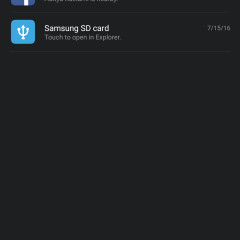
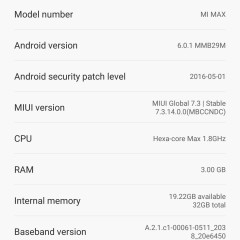

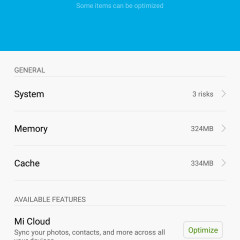
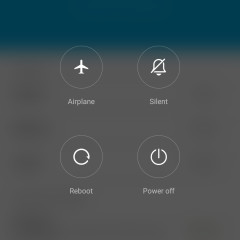

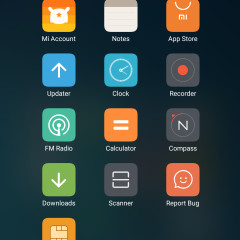


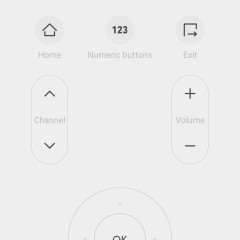









11 Comments - Add comment